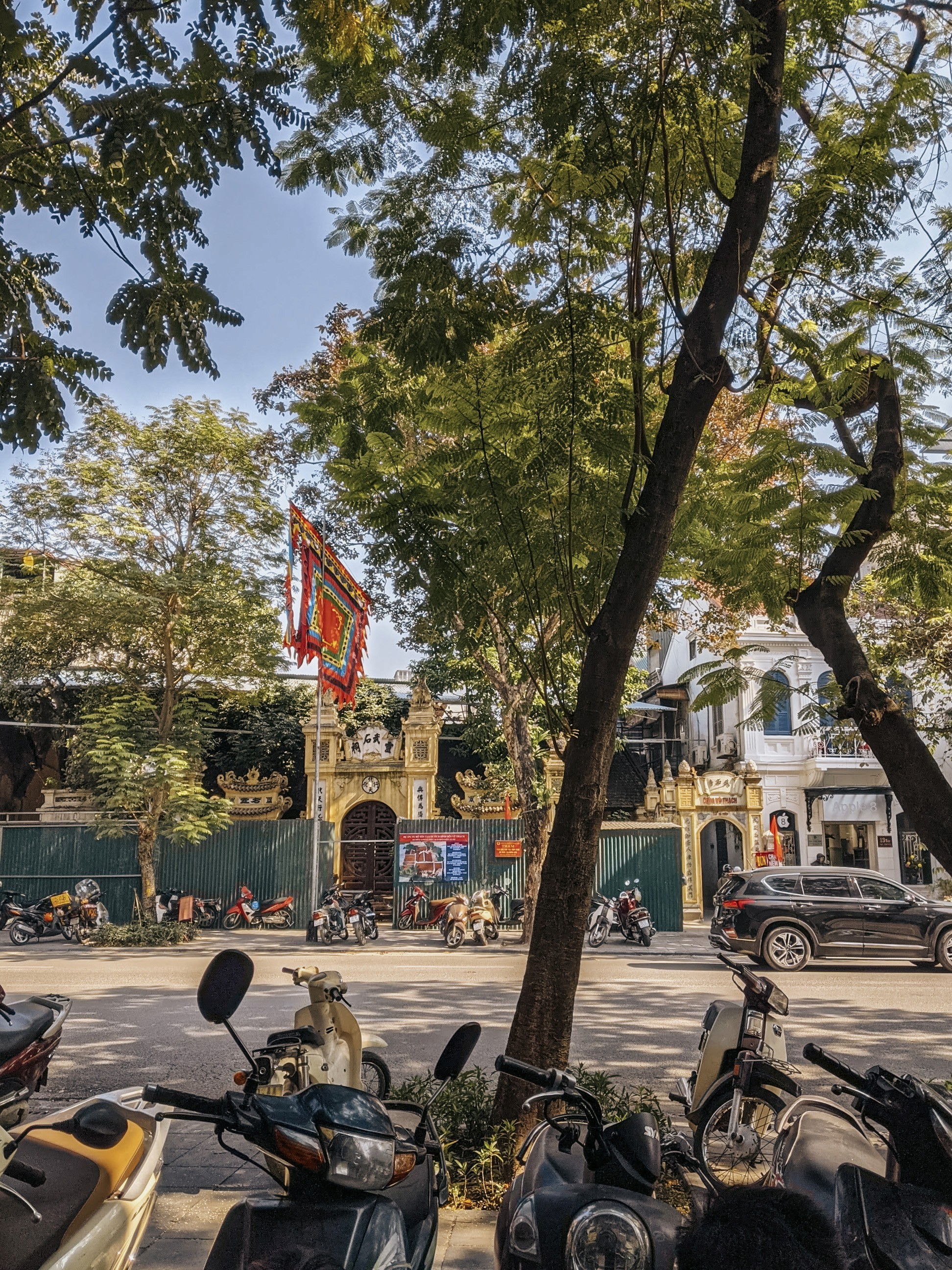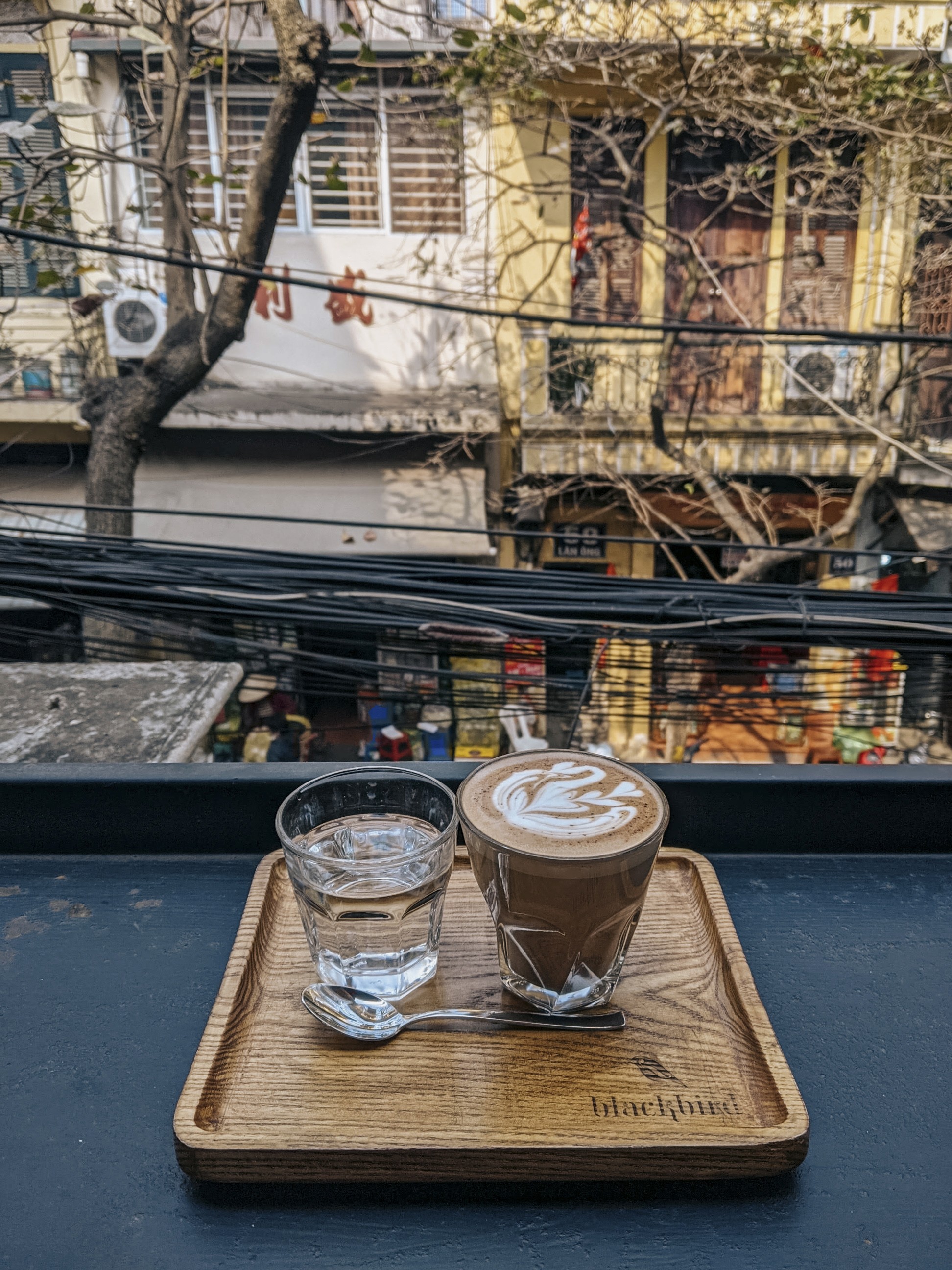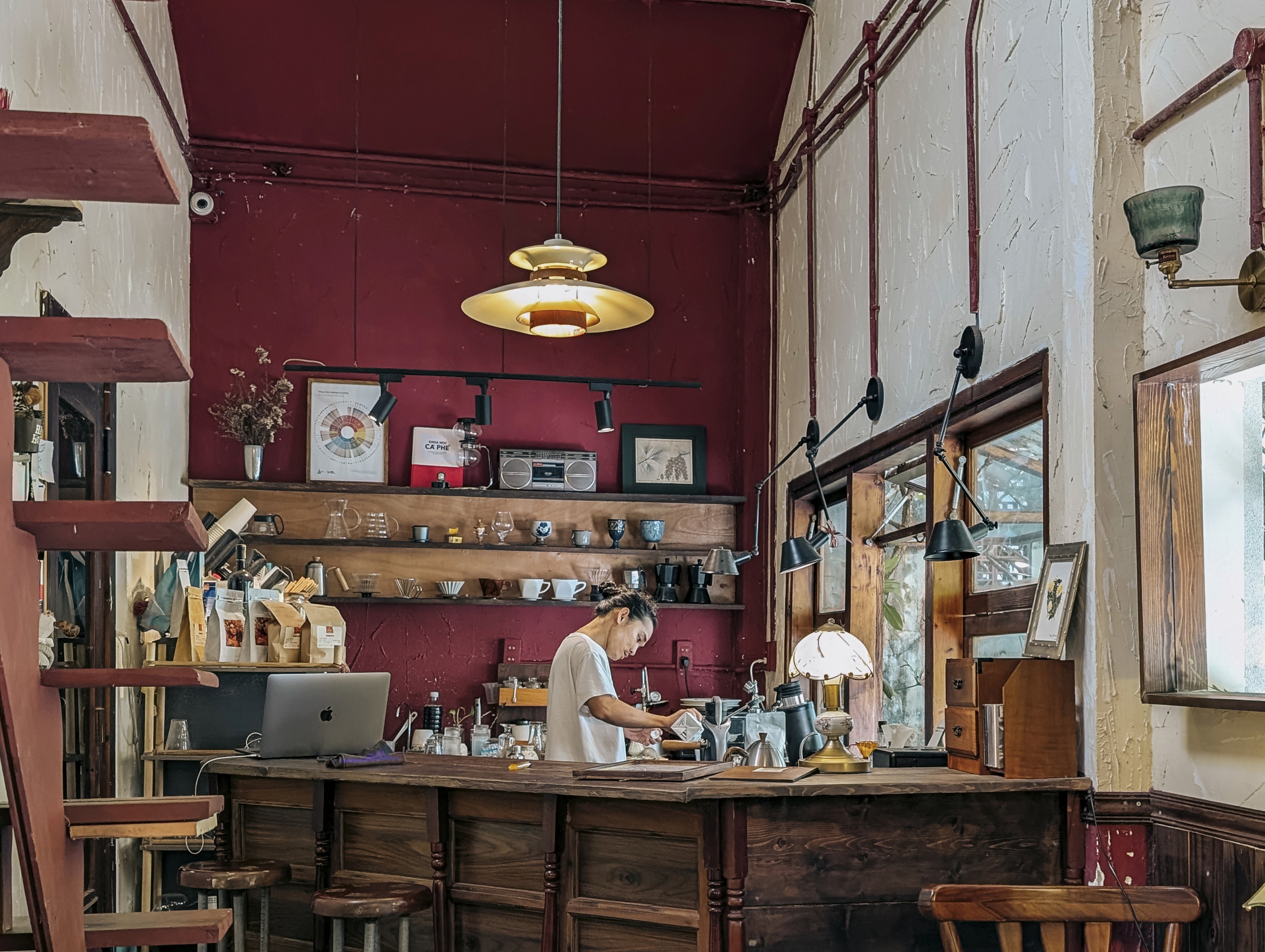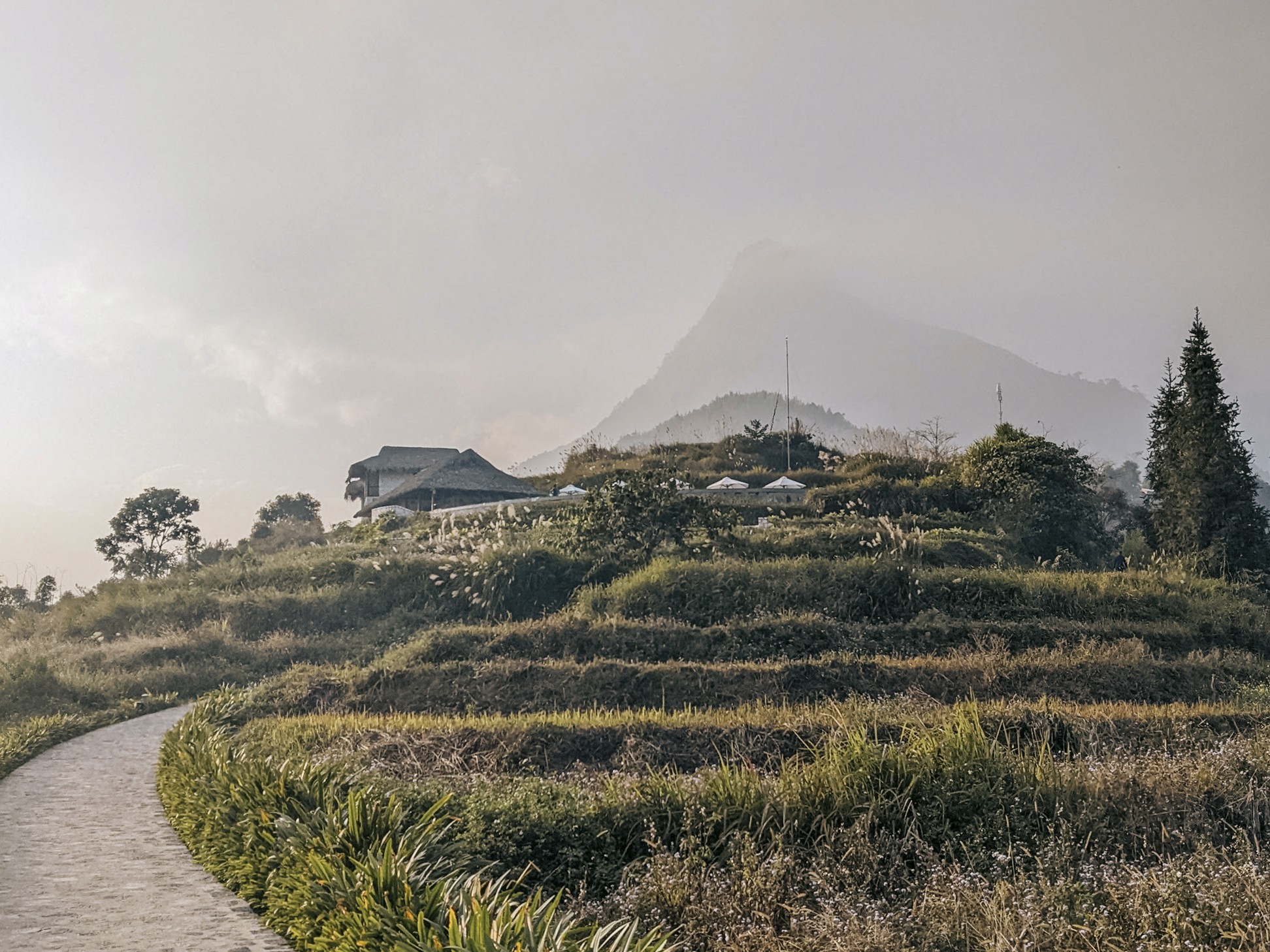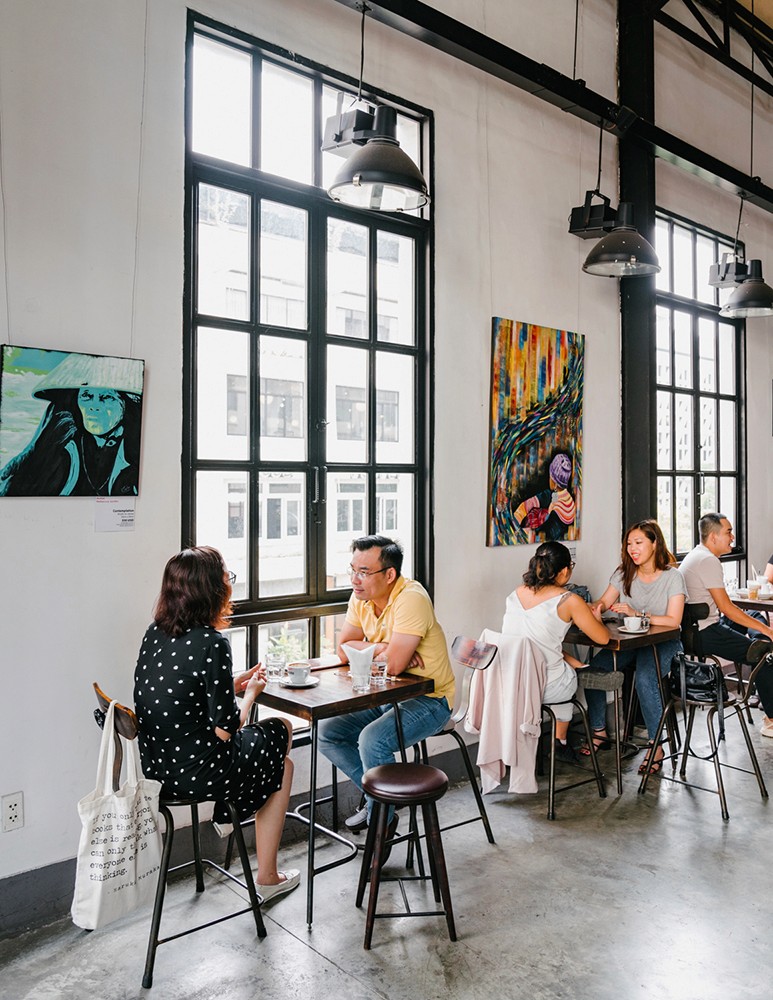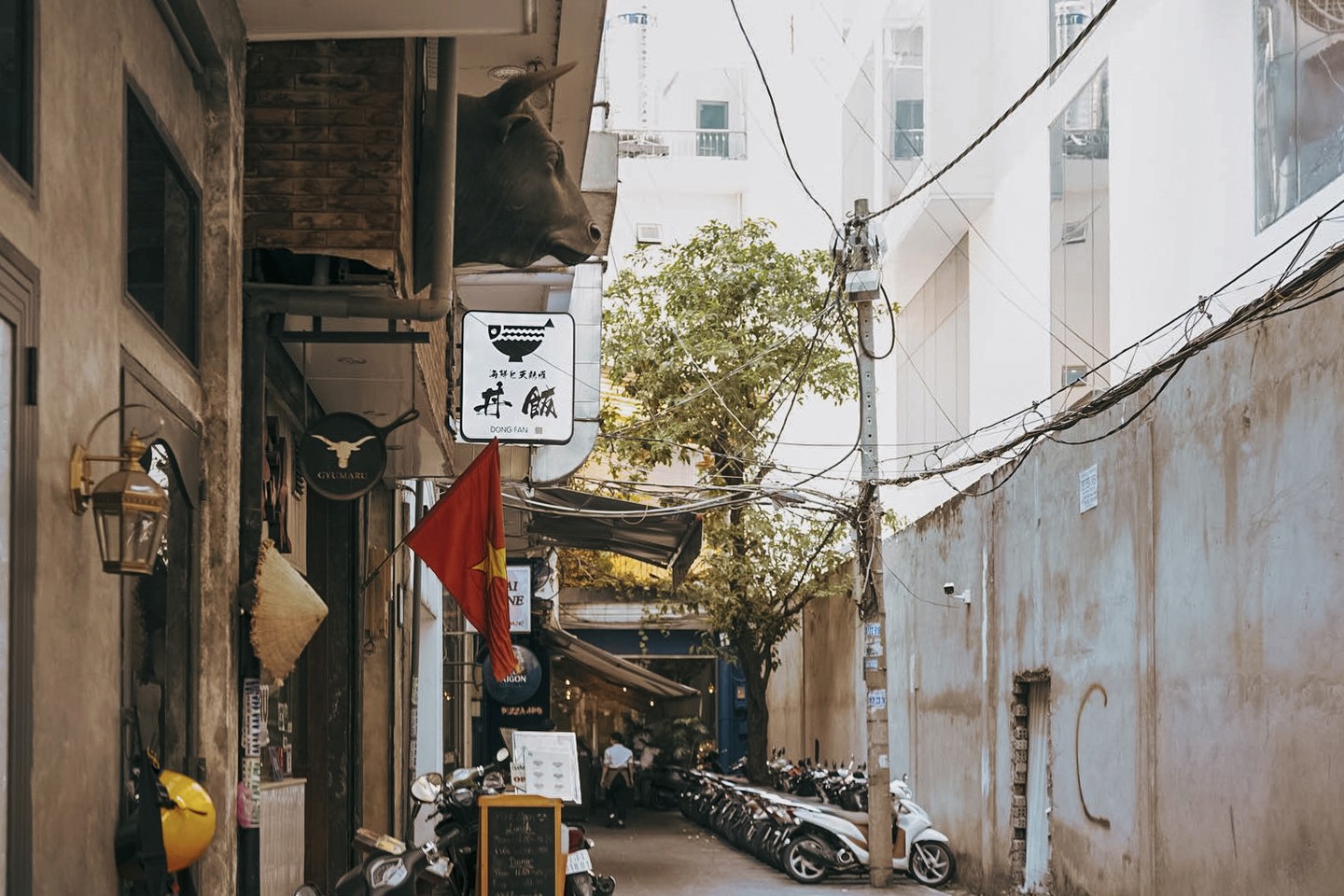I used to tell friends that every good thing in Vietnam was down an alley and up a flight of stairs. But my first encounter with Vietnamese coffee took place right on the sidewalk, across from a cathedral.
✦
I paid a vendor 7,000 dong (about US$0.30) for a cà phê sữa đá, an iced coffee with condensed milk, and sat on a tiny plastic stool with my back to the wall. From this perch, I could take sweet, cold sips, and admire the scene across the square: the flow of motorcycles under the park’s stately trees, tourists in sensible shoes climbing the steps to the post office, pigeons, pop-up card vendors, and photographers angling for whatever they could.
This was 2008. There were few cars on the roads then, even in Vietnam’s largest city. Women wore silky áo dài with hems that fluttered in the breeze. Xe ôm (motor taxi) drivers wearing cheap aviators and thin shirts, unbuttoned almost to the navel, loitered on every corner. Millions of people living in Saigon shared cramped quarters with extended families. They preferred to spend their free time outside, in parks, riding motorcycles, and in sidewalk cafes.
At that time, there was little hype around Vietnamese coffee and no expectations for the brews from sidewalk cafes except that they be cheap and bold.
To “go for coffee” then meant sitting on a folding lawn chair, sipping a drip-filtered brew alongside cups of green tea, and watching the action on the street unfold.
Every city I’ve been to in Vietnam has its long-standing, much-loved version of the sidewalk cafe. This is where the neighborhood gathers, old and young, to gossip, preen, connect, and relax. It’s one of the best introductions a visitor can have to Vietnam. Yet, in the long view of the country’s history, the sidewalk cafe is a new addition.
Lead photo: Lauryn Ishak. Above photos: Esther de la Cruz
Like most colonial transplants, coffee came with its share of exploitation and erasure. When French colonisers brought Arabica seeds to Vietnam in the 1850s, they enlisted ethnic minorities in the Central Highlands to cultivate their new crop. As demand grew, the French built a steady trade on their backs and lands.
By 1922, coffee workers were protesting the poor treatment on farms, and in 1945, a revolt by labourers on French-owned coffee plantations set off a nationwide rebellion, which culminated in Vietnam’s declaration of independence the same year.
The role of ethnic minorities such as the Ede, K’Ho (Ko Ho) and M’nong as Vietnam’s first coffee farmers and landowners is often overlooked by coffee lovers touring the country’s cafes.
My own relationship with Vietnamese coffee didn’t take root until I visited K’Ho Coffee outside Da Lat. Surrounded by hills, lakes, and pine forests, Da Lat was founded by the French in 1912 as a resort and wellness retreat. The K’Ho farm is a 15-minute drive outside, on the slopes of Langbiang Mountain.
Led by co-founders Rolan Co Lieng and Josh Guikema, K’Ho Coffee is a cooperative of 50 farms owned by K’Ho families, who grow, process and roast heirloom Arabica following traditional methods and sustainable agroforestry practices.
Photos: Esther de la Cruz
One unforgettable morning, I walked through rows of coffee trees and racks of coffee cherries drying in the sun, hulled and sorted beans by hand, and finally, roasted and brewed a cup of Arabica grown from seeds passed down over five generations. This coffee was, in every way, an eye-opener.
“Seeing the process gives visitors a better understanding about the labour of love that goes into making single origin coffee,” says Josh.
“Most coffee growing is done by families and households on small farms and backyard gardens. Coffee farming is a lifestyle for many families, and the annual coffee harvest season is a community-building event.”
Between direct coffee sales, insightful tours, and volunteering opportunities, K’Ho Coffee not only provides better livelihoods for the community in Langbiang, but has raised the profile of Vietnamese coffee internationally. Its single-origin Arabica consistently scores between 84 to 89 points by the Speciality Coffee Association, and it’s not the only Vietnamese farm gaining attention.
When The Workshop opened in 2014, it was the first chance for many expats and locals to try specialty coffee grown in Vietnam.
You entered the industrial-chic cafe from a hidden stairwell, where the syphons on the counters and aproned baristas signalled a shift toward a more precise and serious appreciation of locally grown coffee.
The Workshop highlights harvests from emerging farms that pioneer more thoughtful approaches to coffee cultivation and processing. In time, coffee associations and enthusiasts came together to support farmers and train baristas. New technology, knowledge, and certification boosted the movement further, and the industry has never looked back.
Photos: Esther de la Cruz, Lauryn Ishak
As Vietnam’s coffee standards and prices have risen exponentially over the years, so too has the need for storytelling around coffee. Brands like Lacaph have made it their mission to open a window into Vietnam’s coffee landscape. It hosts hands-on workshops in its Saigon cafes for travellers looking to understand more about Vietnamese coffee, and specifically champions fine Vietnamese Robusta, spreading awareness around its exciting potential.
“The biggest change over the past decade or so is the huge boost in pride and confidence across Vietnam’s coffee industry,” says Lacaph founder Timen Swijtink.
“You can really see this shift in the way local cafes now proudly serve Vietnamese specialty brews, and how producers are telling richer stories about their coffee. It’s a big cultural leap forward.”
These days, my coffee orders are more often given at specialty cafes and handled by a barista who takes a full 20 minutes to extract the best from the beans. Sometimes, I still pull up a stool at a sidewalk cafe on my street. Whichever way I get it, the coffee now is so much better than I remember. What has stayed the same is how it feels to be part of the ever-changing scene in Vietnam.
Must-try coffee adventures in Vietnam
Da Lat
Visit K’Ho Coffee farm for a half-day tour, see the roastery at La Viet.
Cafes to visit:
Da Nang
Try salt coffee (cà phê muối) and hunt for hidden cafes in the alleys.
Cafes to visit:
Hanoi
Sip an egg coffee (cà phê trứng) in winter, people-watch at cafes in the Old Quarter.
Cafes to visit:
Ho Chi Minh City
Try bac xiu, southern-style iced coffee, and check out specialty cafe headquarters.
Cafes to visit:
Hoi An
Enjoy a coconut coffee (cà phê dừa) on the beach.
Cafes to visit:

